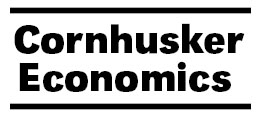Agricultural Economics, Department of

Cornhusker Economics
Date of this Version
1-28-2010
Document Type
Newsletter Issue
Citation
Cornhusker Economics
Abstract
The U.S. hog industry, once primarily made up of small owner-operated crop-hog farms, has become dominated by large specialized operations characterized by low costs and improved technologies in livestock management. Such changes have triggered concerns over the dangers large Hog Feeding Operations (HFOs) are likely to pose to the environment. In 2007, the top ten states accounted for more than 85 percent of total U.S. hog production (Iowa (IA), North Carolina (NC), Minnesota (MN), Illinois (IL), Nebraska (NE), Indiana (IN), Missouri (MO), Oklahoma (OK), Ohio (OH), and Kansas (KS)). With such domination on production, these states are often the subject of environmental debate relating to hog production. When farmers are required to incorporate environmental measures in hog production, their costs of production increase. Metcalfe (2001) found that small HFOs have found it difficult to cope with such costs and many have exited the industry, while large operations have not been affected at the same level. Due to the variation of environmental regulations among states, other operations moved to states with lax regulations (e.g. NC prior to the late 1990s). Such regulations appear to have played a major role in shaping the structure of the hog industry.


Comments
Published by the Department of Agricultural Economics, University of Nebraska – Lincoln. Copyright 2010 Regents of the University of Nebraska.